3 April 2014. To set the stage for today’s posting, I quote from the “About Me and This Collection” page, “I have this idea that whenever I go birding there’s always a Bird of the Day. Even a miserable, cold, dank day will produce something special, and it doesn’t have to be rare to be special. Sometimes two or three birds are the highlights, but there’s always at least one, one that stands out because it made me think Wow!”
I wouldn’t say that this was a miserable or dank or even particularly cold day but as birding days go it was a bit of a slog; but it had its highlights.
My first stop was the hawk-watch. I thought that today’s overcast skies might bring the birds down to where we could get a better look at them rather than way up high against an endless expanse of blue. Well, the birds were perhaps a little lower, but if anything farther away from the lookout. In any event after three quarters of an hour and a bunch of distant Red-shouldered, Red-tailed and Sharp-shinned Hawks I declared it not quite exciting enough and left.
I spent an hour or perhaps two patrolling the iced-over or sometimes waterlogged farm fields looking for ducks and geese. It took a while before I found the right place, and when I did, I sat comfortably in my car scanning distant congregations of Canada Geese (by the hundreds) Mallards (plentiful), perhaps a dozen Northern Pintails, two each of American Wigeon and American Black Ducks and a solitary Tundra Swan. In this shot, (click on it to enlarge it) there are actually three pintails although two of them are quite hard to make out.
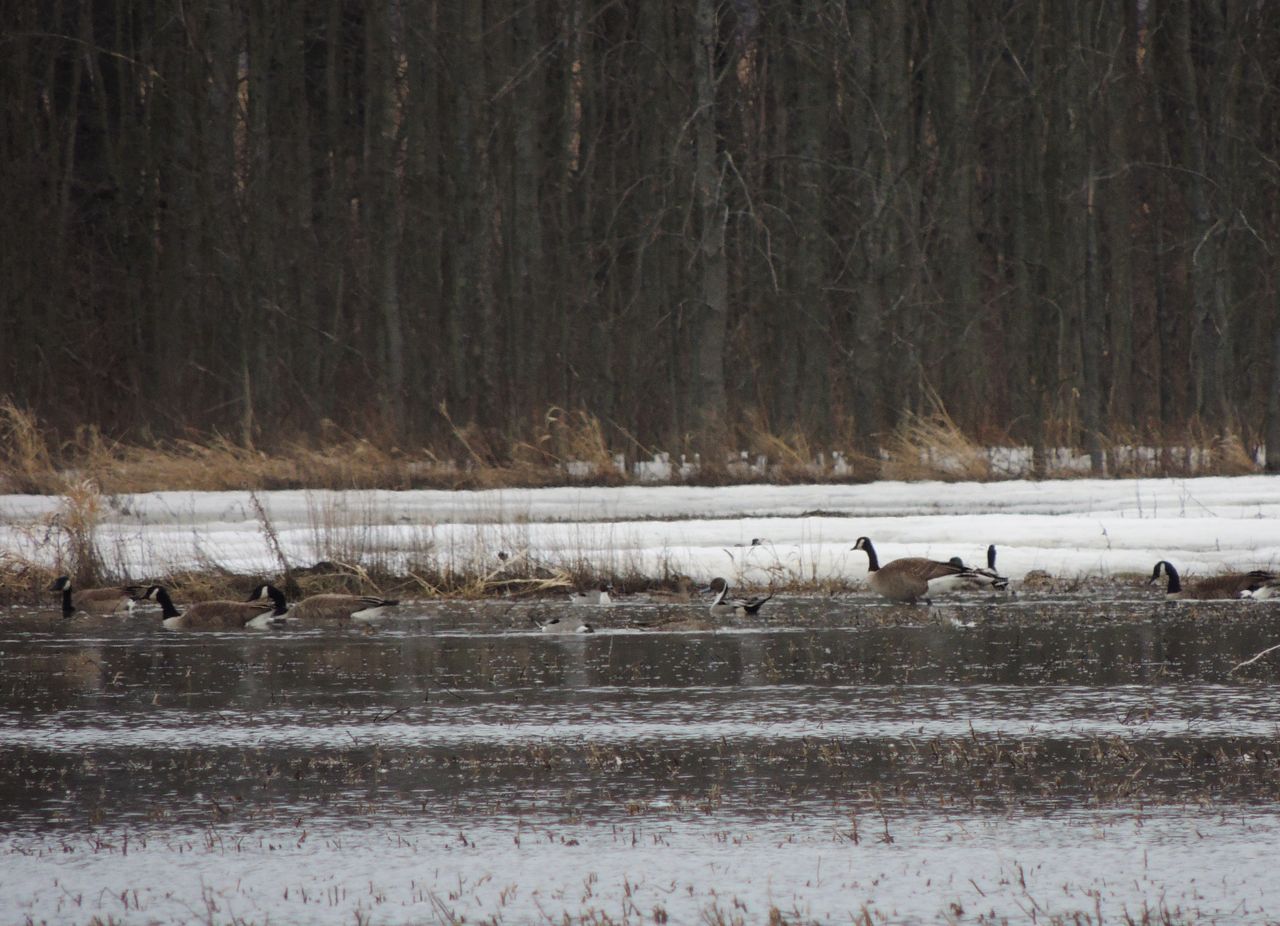
Bird of the Day, the Wow! bird, was the casual sighting of a road-side Peregrine Falcon. It obligingly allowed me a few photos. Its destination, whether it will choose to breed on an inner-city office tower somewhere or a distant cliff face, is anyone’s guess.
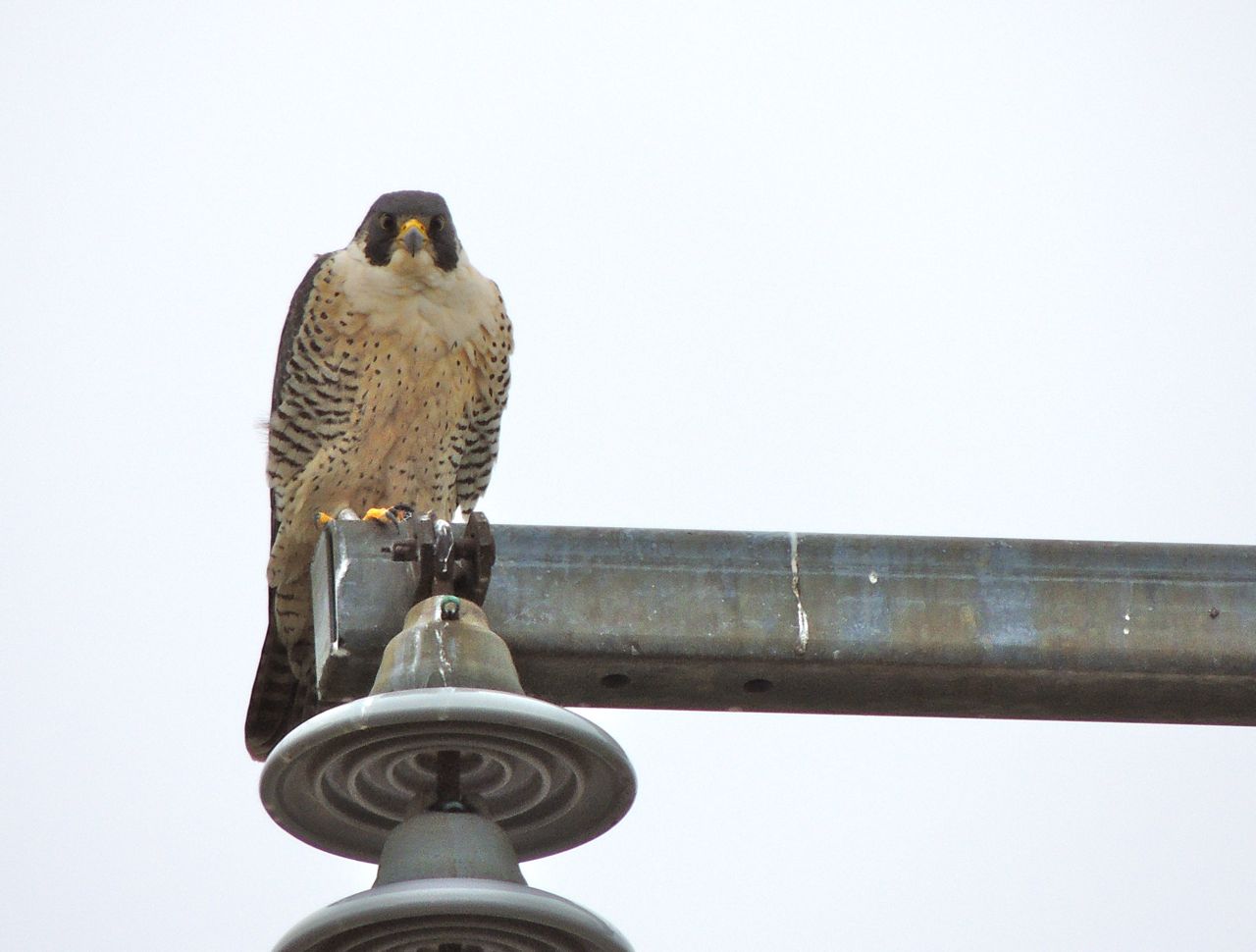
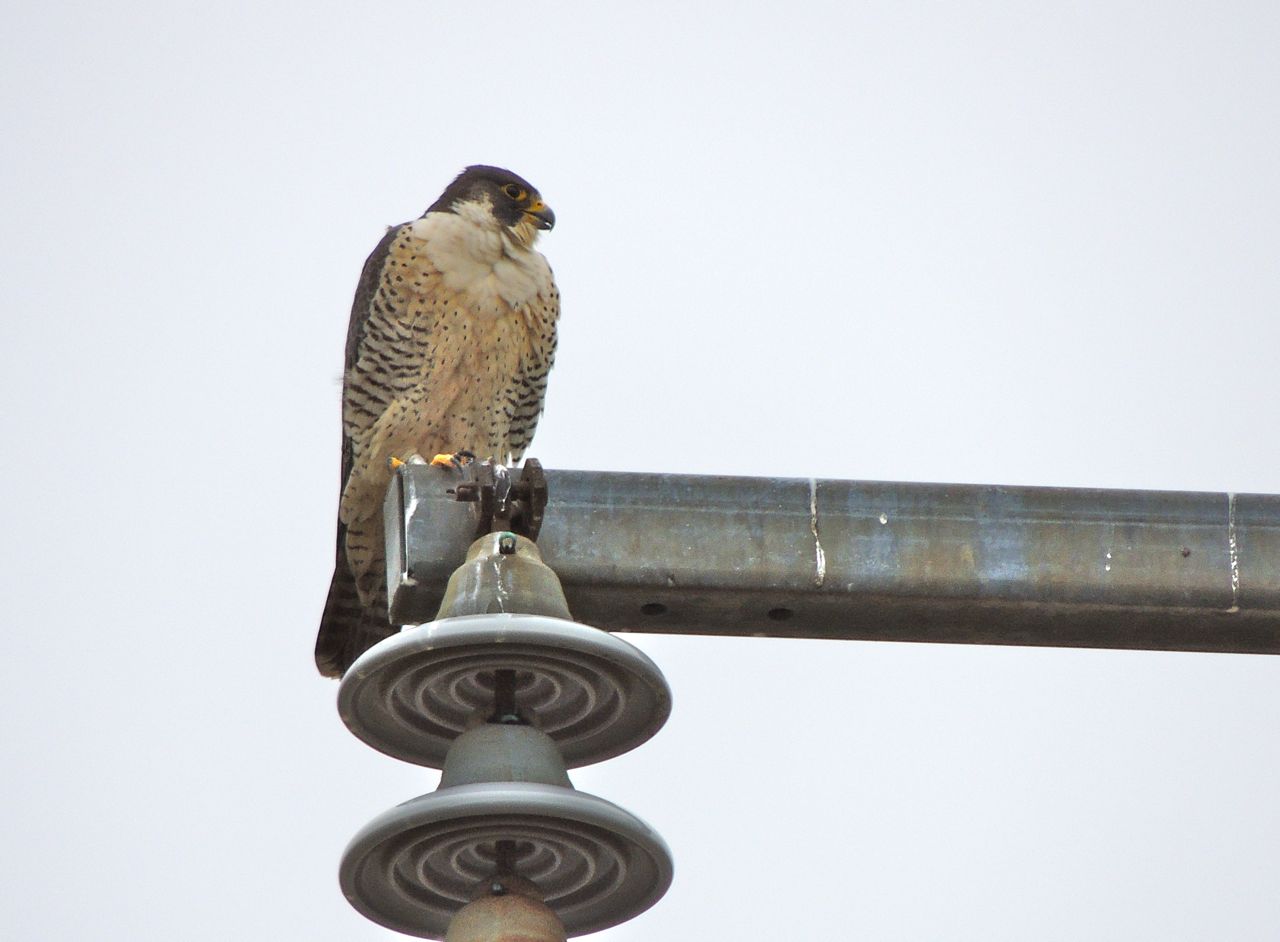
Lastly I stopped at one of our nastier industrial birding sites where, in the dubious waters of a canal, which counts as part of its headwaters the discharge from a sewage treatment plant, were dozens of Lesser Scaup, American Coots and Northern Shovelers. I understand that those waters may be relatively warm and that the supply of invertebrate food is probably quite nourishing, but hanging around in waters like that can’t be good for a species’ reputation.
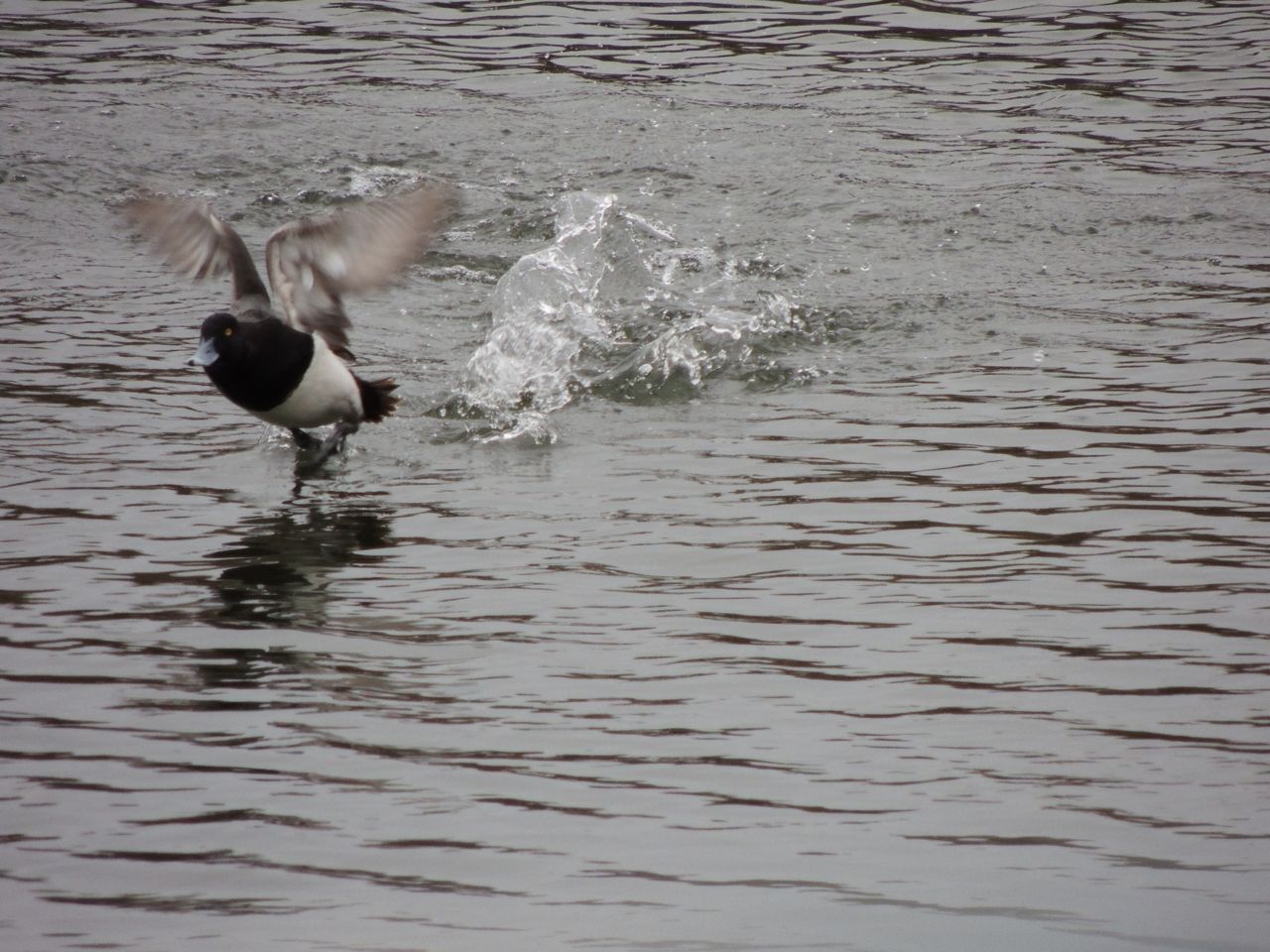
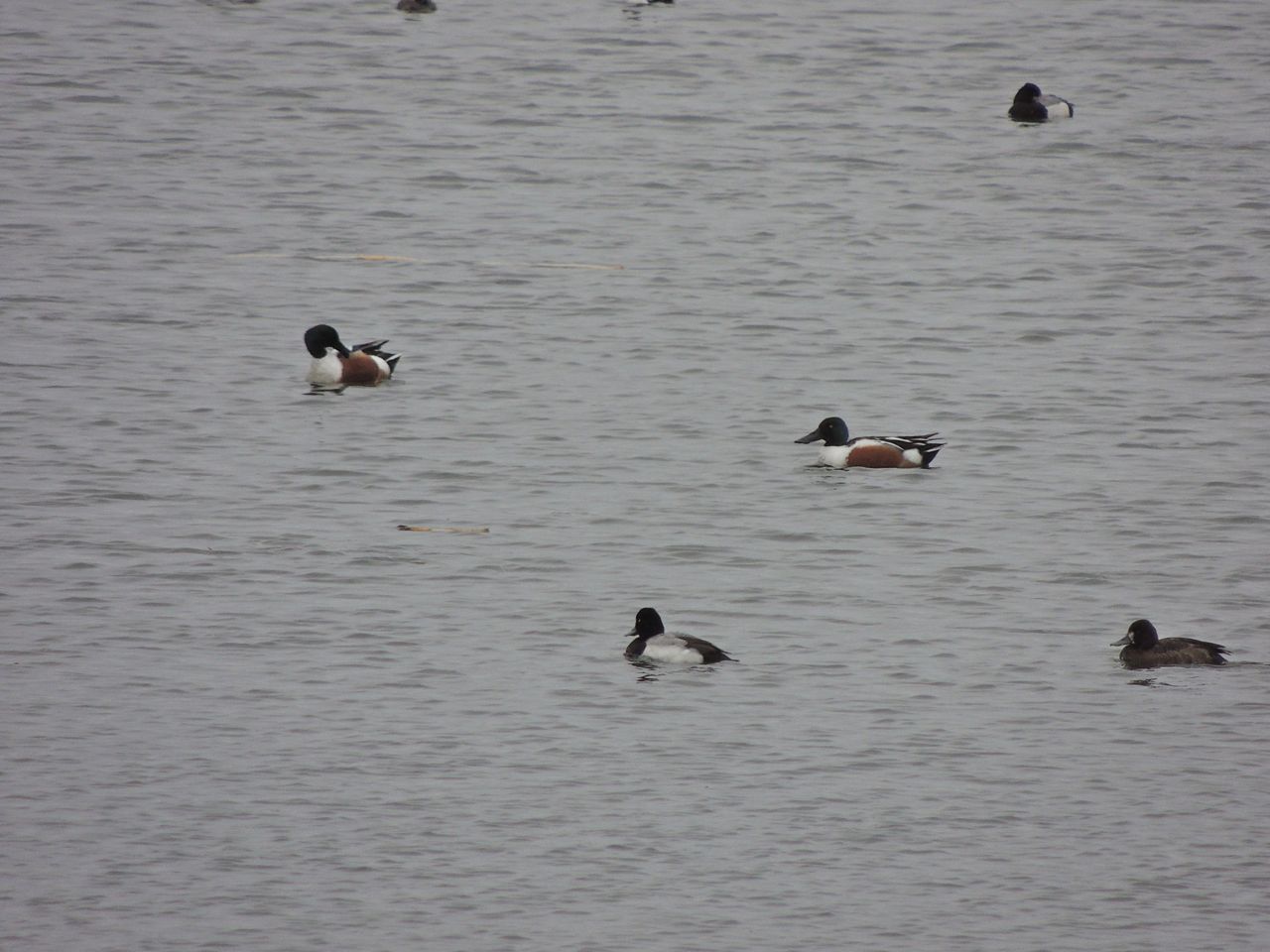
Footnote, a little off topic. American Woodcock are early returns in the spring, usually just as the ground is softening up. This link will take you to a fascinating video of an American Woodcock at its twilight display ‘song’, And quite apart from its woodcock piece, The Miracle of Nature site is fabulous and well worth taking a look.